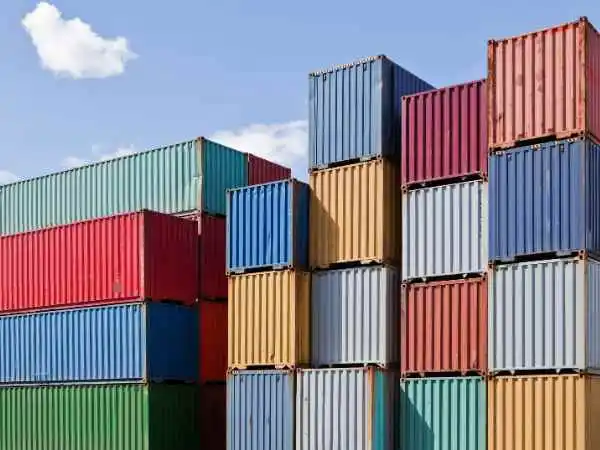Global economy, especially in relation to international trade, is supported by transport of goods across oceans within the container shipping industry. The sector will experience major transformations by 2024 due to technology change, environmental regulations and market dynamics. This blog post will discuss the main trends that are influencing Container Shipping Industry in 2024 highlighting on opportunities and challenges that may be experienced going forward.
It is thus vital for you to know them all if you want to invest in shipping containers for sale or are a businessman looking for shipping solutions or even someone in this profession.
1. Technological advancements and digitalization
The container shipping sector has entered a new dawn of digital era. By 2024, there would be more adoption of advanced technologies such as block chain, artificial intelligence (AI) and Internet of Things (IoT). These technologies help enhance efficiency during operations thereby cutting costs and enhancing transparency along the supply chain.
Blockchain Technology: The technology helps in creating secure shipment documents and transactions. In addition, it has eliminated fraud cases and simplified procedures while offering live tracking systems.
2. Sustainability and Green Shipping
In the container shipping industry, environmental concerns are increasingly significant. In 2024, there will be an increased focus on sustainable practices and green maritime measures. The industry is therefore being pressured to reduce emissions and comply with more stringent environmental rules.
Decarbonization: Shipping companies are adapting to new fuels, such as; Liquefied Natural Gas (LNG), hydrogen, bio-fuels that produce less greenhouse gases. Besides, there is an increment in the number of electric and hybrid vessels.
Energy Efficiency: Advancements in ship designs and propulsion systems have led to improved energy efficiency. In order to reduce fuel consumption technologies such as wind assisted propulsion and air lubrication systems are being considered.
Regulatory Compliance: The International Maritime Organization has set its sight on emission reductions that will be the most ambitious ever. Therefore, if these regulations are met it will lead to a cleaner technology adoption and practice.
3. Market Dynamics and Trade Patterns
Given that the global trading environment is always changing, shipping containers Sydney industry must adapt accordingly. This means that 2024 will be affected by changes in trade patterns, geopolitical tensions and economic fluctuations.
Geopolitical Tensions: Conflicts erupting from global trade wars and geopolitical battles can disrupt shipping lanes thereby affecting cargo flow patterns. Companies must stay agile enough through these uncertainties.
Economic Fluctuations: This can affect shipping demand either negatively or positively depending on whether there is recession or boom in major markets respectively. It calls for responsiveness to shifts in consumer preferences plus economic circumstances by the sector itself.
4. Infrastructure Development and Port Modernization
Port Infrastructure Efficiency: Port infrastructure efficiency is a very critical determinant for the container shipping industry. Ports are taking up significant investments with regards of port modernization and infrastructure development slated for 2024 to accommodate bigger ships as well as improve cargo handling efficiencies.
Automated ports: Automation technologies are being implemented to streamline port operations. This includes automated cranes, guided vehicles, smart terminals that increase efficiency by reducing turnaround times.
Expansion projects: Several ports are undertaking expansion works to cater for giant vessels such that their capacities would rise. This would involve deepened channels through dredging processes, building larger berths besides improving intermodal connectivity.
Smart technology at ports: The concept of smart ports is gaining traction. Optimizing operations, traffic management, security enhancement are some of the things digital technologies enable smart ports execute effectively.
5. Supply Chain Resilience and Risk Management
The pandemic of COVID-19 has revealed the weaknesses in global supply chains. One of the major focuses for 2024 is on developing resilient supply chains and robust risk management strategies.
Diversification of Supply Chains: Firms are diversifying their supply chains to avoid excessive dependence on a single source or region with a view to mitigating potential disruptions in specific areas.
Inventory Management: Better inventory management practices, which apply just-in-time (JIT) and just-in-case (JIC) techniques that balance efficiency against resilience, are being adopted.
Risk Assessment and Mitigation: Advanced risk assessment tools and analytics are being used to identify potential risks and develop mitigation strategies for them. Examples include monitoring geopolitical risks, natural disasters, market fluctuations etc.
6. E-commerce and Last-Mile Delivery
The shipping business was affected by the rise of e-commerce. The demand for logistics and transport innovations that can enable efficient last-mile delivery solutions in 2024 drove these innovations.
Growth of E-commerce: The exponential increase in e-commerce makes more small parcels/packets shipped. Consequently, shipping firms have been compelled into optimizing their services for faster deliv
Urban Logistics: Urbanization and the growth of mega-cities are creating challenges for last-mile delivery. Solutions such as urban distribution centers, micro-fulfillment hubs, and the use of electric delivery vehicles are being explored.
Technology Integration: The integration of advanced technologies, such as drones and autonomous delivery robots, is being tested to enhance last-mile delivery efficiency and reduce costs.
In conclusion, the container shipping industry in 2024 is facing a whirlwind of technological advances; pressure to be more sustainable, changing trade dynamics, and shifting market demands. Keeping up with these trends is crucial for everyone involved, from shipping companies and port operators to investors and businesses that rely on global trade. As the industry keeps evolving, there are tons of opportunities, especially in areas like integrating new technology, eco-friendly shipping, and investing in shipping containers for sale.






















